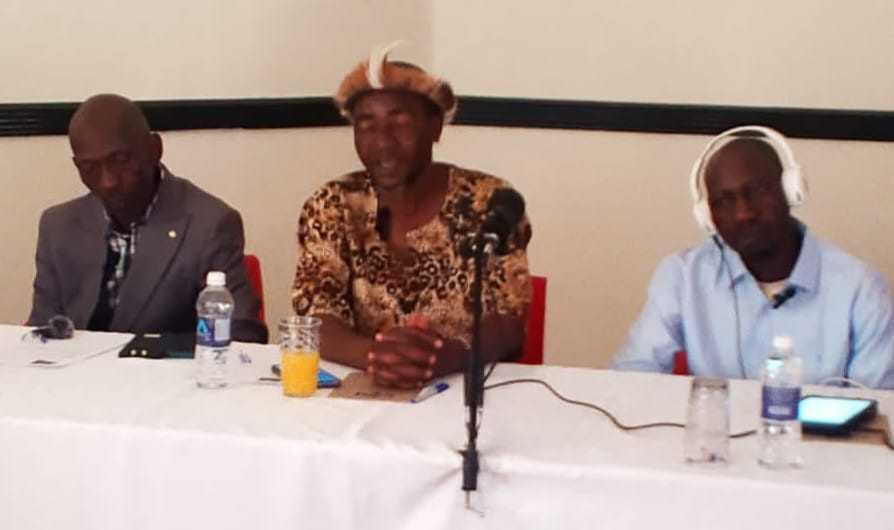
On July 29 the government of Zimbabwe announced a US$3,5 billion compensation for the former large-scale commercial farmers whose land was compulsorily acquired through the fast track land reform programme of 2001. In the announcement, government clarified that the compensation was for improvements on the farms and not the land. Government, through the ministers of Finance and Agriculture further issued another public statement on August 31 where it clarified that farms which were on Bilateral Investment Protection and Promotion Agreements (BIPPAs) and previously owned by indigenous (black) Zimbabweans were not part of the global agreement. Instead these would be treated on a case by case basis to either receive compensation for both the value of the land and also farm improvements in terms of Section 295, subsections [1] and [2] of the constitution. Government also announced their intention to either compensate or return the farms previously owned by black Zimbabweans to their owners if conditions do permit for the cancellation of existing leases or permits to allow for the previous owners to take back their land.
by Tendai Murisa
These announcements by the government have led to a highly charged debate (see Murisa 2020 here http://www.tendaimurisa.org/thought/to-compensate-or-not-to/).
One of the big questions of the day is where will Zimbabwe get US$3,5bn to pay these former farmers? So far, the government has announced that it is looking for an expert to help in the design of the structure and also help with the raising efforts. In the agreement the former large-scale commercial farmers through their representative union also committed to helping with the fundraising efforts.
In this discussion note we explore three possible ways of resolving the compensation challenge:
l Option one: Broaden the compensation options Land reform was not necessarily about removing white farmers but instead it was about deracialising land ownership patters and also altering farm sizes to accommodate many other would-be farmers. Former large-scale commercial farm owners should be allowed to choose between taking the compensation deal or being resettled on resized farms. In many dialogues hosted by then AIAS (now SMAIAS) the issue of the brain drain out of the farms was raised. The compensation deal could offer an opportunity to accommodate former white farmers. Many of these former white farmers are Zimbabweans and they have not left. At the moment policy seems to favour foreign former farm owners who were on BIPPA farms. The separate deal for BIPPAS suggests that there is a possibility of government returning some of these farms to the previous owners. The same has not been extended to former large-scale farmers who were not on BIPPA farmers. Others have argued that this could be seen as discrimination.
l Option two: Develop an instrument to mobilise for compensation There are many ways of ensuring that the proposed compensation package does not create a new national debt burden. Way back in 1991 the World Bank had recommended the introduction of a land tax because, according to empirical studies, the majority of commercial farmers were only using at least a third of their farms. The same applies today. Underutilisation of land is a common trend across all models. The establishment of a land tax will create efficiencies in the utilisation of land. The land tax can be complimented by the establishment of a land bank. All the nationalised agricultural land will be owned by the proposed land bank and it will collect rentals in the forms of leases and permits. The government can, through the proposed land bank, issue a bond to raise resources and pay off the farmers.
l Option three: Re-engage the British government on the Compensation Package At independence the British government made a commitment to support land reform albeit on a willing-buyer willing-seller basis. Before the relations broke down between London and Harare, there had been an evaluation of the land reform programme, commonly now cited as The Cusworth and Walker Report (1988). The report produced empirical evidence in support land reform and showed that land beneficiaries were better off than their customary counterparts in terms of asset accumulation and food security (Cusworth and Walker, 1988). The report concluded by urging the British government to release more funding for land reform.
- Chamisa under fire over US$120K donation
- Mavhunga puts DeMbare into Chibuku quarterfinals
- Pension funds bet on Cabora Bassa oilfields
- Councils defy govt fire tender directive
Keep Reading
However, it was the passing of the Land Acquisition Act (1992) which dampened the mood of the British government (Selby, 2006:13). Outside of these misunderstandings, the British government should honour its pledge more so when the funds under discussion will be going directly to former large-scale commercial farmers.
Include former farm workers in the deal Zimbabwe’s land reform did not follow the usual pattern — where farm workers (tillers of the land) become the major beneficiaries of redistributed land. Instead former farm workers only constitute 8% of the land beneficiaries. The majority of the farm workers were never paid severance packages by their former employers, they live in poverty and some of them were absorbed by the new farmers. It will be a travesty of justice if they are excluded from this deal.
l Tendai Murisa is the Sivio Institute’s executive director.











